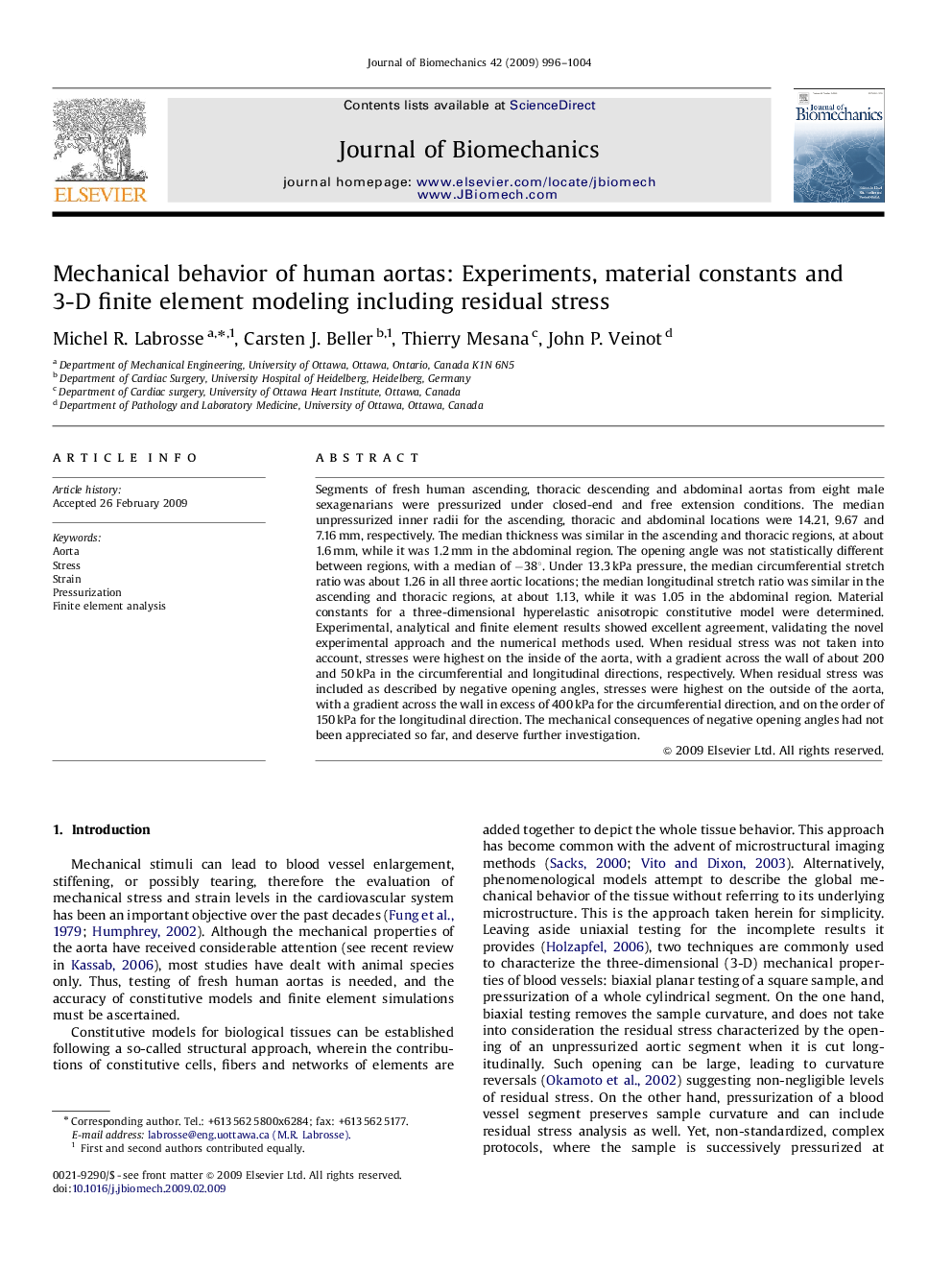| کد مقاله | کد نشریه | سال انتشار | مقاله انگلیسی | نسخه تمام متن |
|---|---|---|---|---|
| 872689 | 910276 | 2009 | 9 صفحه PDF | دانلود رایگان |

Segments of fresh human ascending, thoracic descending and abdominal aortas from eight male sexagenarians were pressurized under closed-end and free extension conditions. The median unpressurized inner radii for the ascending, thoracic and abdominal locations were 14.21, 9.67 and 7.16 mm, respectively. The median thickness was similar in the ascending and thoracic regions, at about 1.6 mm, while it was 1.2 mm in the abdominal region. The opening angle was not statistically different between regions, with a median of −38°. Under 13.3 kPa pressure, the median circumferential stretch ratio was about 1.26 in all three aortic locations; the median longitudinal stretch ratio was similar in the ascending and thoracic regions, at about 1.13, while it was 1.05 in the abdominal region. Material constants for a three-dimensional hyperelastic anisotropic constitutive model were determined. Experimental, analytical and finite element results showed excellent agreement, validating the novel experimental approach and the numerical methods used. When residual stress was not taken into account, stresses were highest on the inside of the aorta, with a gradient across the wall of about 200 and 50 kPa in the circumferential and longitudinal directions, respectively. When residual stress was included as described by negative opening angles, stresses were highest on the outside of the aorta, with a gradient across the wall in excess of 400 kPa for the circumferential direction, and on the order of 150 kPa for the longitudinal direction. The mechanical consequences of negative opening angles had not been appreciated so far, and deserve further investigation.
Journal: Journal of Biomechanics - Volume 42, Issue 8, 29 May 2009, Pages 996–1004